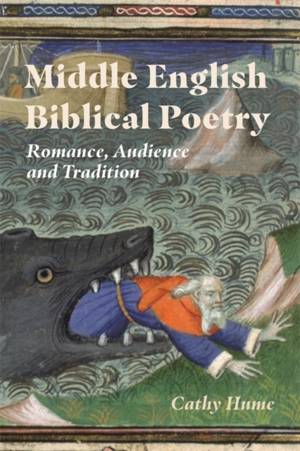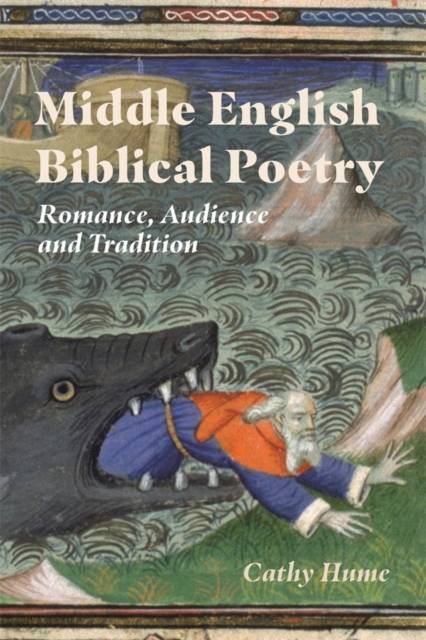
Je cadeautjes zeker op tijd in huis hebben voor de feestdagen? Kom langs in onze winkels en vind het perfecte geschenk!
- Afhalen na 1 uur in een winkel met voorraad
- Gratis thuislevering in België vanaf € 30
- Ruim aanbod met 7 miljoen producten
Je cadeautjes zeker op tijd in huis hebben voor de feestdagen? Kom langs in onze winkels en vind het perfecte geschenk!
- Afhalen na 1 uur in een winkel met voorraad
- Gratis thuislevering in België vanaf € 30
- Ruim aanbod met 7 miljoen producten
Zoeken
€ 177,45
+ 354 punten
Omschrijving
A new analysis of the neglected genre of medieval Biblical poetry. Medieval England had a thriving culture of rewriting the Bible in art, drama, and literature in Latin, French and English. Middle English biblical poetry was central to this culture, and although these poems have suffered from critical neglect, sometimes dismissed as mere "paraphrase", they are rich, innovative and politically engaged. Read in the same gentry and noble households as secular romance, biblical poems borrow and adapt romance plots and motifs, present romance-inflected exotic settings, and share similar concerns: reputation, order, family and marriage.
This book explores six poems from the thirteenth and fourteenth centuries that retell episodes from the Old Testament: the ballad-like Iacob and Iosep, two lives of Adam and Eve; an alliterative version of the Susanna story, the Pistel of Susan; and the Gawain-poet's Patience and Cleanness. Each chapter identifies new sources and influences for the poems, including from biblical glosses and manuscript illustration. The book also investigates the poems' relationships with contemporary cultures of literature and religion, including with secular romance, and offers new readings of each poem and its cultural functions, showing how they bridge the chasm between medieval Christian England and the Jews and pagans of the pre-Christian Mediterranean world. It also considers reading contexts, arguing that the poems and their manuscripts offer hints about the social class and gender of their household audiences.
This book explores six poems from the thirteenth and fourteenth centuries that retell episodes from the Old Testament: the ballad-like Iacob and Iosep, two lives of Adam and Eve; an alliterative version of the Susanna story, the Pistel of Susan; and the Gawain-poet's Patience and Cleanness. Each chapter identifies new sources and influences for the poems, including from biblical glosses and manuscript illustration. The book also investigates the poems' relationships with contemporary cultures of literature and religion, including with secular romance, and offers new readings of each poem and its cultural functions, showing how they bridge the chasm between medieval Christian England and the Jews and pagans of the pre-Christian Mediterranean world. It also considers reading contexts, arguing that the poems and their manuscripts offer hints about the social class and gender of their household audiences.
Specificaties
Betrokkenen
- Auteur(s):
- Uitgeverij:
Inhoud
- Aantal bladzijden:
- 240
- Taal:
- Engels
Eigenschappen
- Productcode (EAN):
- 9781843846055
- Verschijningsdatum:
- 20/08/2021
- Uitvoering:
- Hardcover
- Formaat:
- Genaaid
- Afmetingen:
- 152 mm x 231 mm
- Gewicht:
- 544 g

Alleen bij Standaard Boekhandel
+ 354 punten op je klantenkaart van Standaard Boekhandel
Beoordelingen
We publiceren alleen reviews die voldoen aan de voorwaarden voor reviews. Bekijk onze voorwaarden voor reviews.









